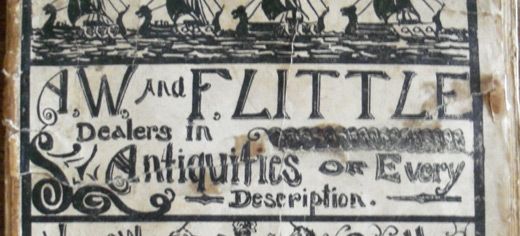
It is worth billions each year to the British economy and inspires endless hours of television programming. But the British antiques trade has been somewhat neglected by academics - until now.
A groundbreaking history of the modern British antiques trade led by the University of Leeds today unveils an online resource that will map out a century of activity in this economically important sector.
Antique Dealers: the British Antiques Trade in the 20th Century, a Cultural Geography, is a 30-month project headed by Dr Mark Westgarth, a lecturer in the School of Fine Art, History of Art and Cultural Studies at Leeds.
Dr Westgarth, himself a dealer before turning to academia, said: “The project aims to map the changing nature of the antiques trade as it evolved and developed in Britain during the last century, and to place the significance of the antiques trade into a variety of social, economic, political and cultural contexts.”
“We can now begin to investigate and critically analyse the history of this fascinating and highly significant part of our cultural life.”
The project’s web resource features an interactive map and dateline allowing anyone to search for information about dealers in Britain over the course of the 20th century.
“Crucially, it will also allow dealers to track the provenance of items, by providing a sort of genealogy for antiques,” added Dr Westgarth. “While it is very much a work in progress at launch, with information being added all the time, eventually we hope all dealers trading in Britain from 1900-2000 will be included in the project website.”’
The project represents the first time the history of the modern antiques trade has been subject to sustained academic study.
The British art and antiques market is one of the oldest and most important in the world. Although its share is dwindling, last year it accounted for a 20% slice of the booming £50 billion-plus global art market, second only to the US and China.
The project’s new website will enable visitors to:
- see and compare the concentrations of dealers in various parts of Britain over time – when, for example, did the Cotswolds become a key location for the trade, and when did that change?
- track the different ways in which various dealers have been described and classified over time – when, for example, did dealers in “Old English furniture” emerge and when did that term fall out of fashion?
- read about the changing history of individual dealerships as they moved location, changed ownership, or changed trading specialisms.
Mark Dodgson, Secretary General of the British Antique Dealers’ Association, said: “The concept of an interactive website charting the historical locations of antiques shops and the movement of beautiful objects from collectors to dealers and into museum collections should prove fascinating for anyone interested in the history of the decorative arts.
“The UK has always been one of the world’s most significant locations for the trade in antiques, whether English furniture or Chinese ceramics. It is therefore fitting that a British university should have undertaken a study into this important aspect of our national life.
“I know that antiques dealers are often keen to check the historical ownership of important items they sell – referred to in the trade as the “provenance” – to back up their own judgements about the age and origin of pieces. The new website will provide them with an excellent tool for checking where and when dealers were trading in the past, so adding to the information they can provide to antique collectors about their purchases.”
Christopher Wilk, Keeper of Furniture, Textiles and Fashion at the Victoria and Albert Museum, said: “This is an important and innovative project which points the way towards a serious consideration of modern antique dealing. The methodology of the project is innovative, not least in its mixture of oral history, archival research and cultural geography.”
Dr Westgarth’s project is also collecting scores of oral histories from prominent members of the trade. It is also amassing key archives for safekeeping as part of the University’s Special Collections, including those of Phillips of Hitchin and Roger Warner – a regular of Going for a Song, the precursor to Antiques Roadshow.
And a Centre for the Study of the Art and Antiques Market will be established at Leeds, with a major conference planned at nearby Temple Newsam House next April.
The project, which started in September 2013, is funded by a research grant from the Arts and Humanities Research Council (AHRC). The research team includes Dr Eleanor Quince from the University of Southampton as co-investigator, and University of Leeds Research Fellow Elizabeth Jamieson. The team have also been working with Leeds City Council Museums and Galleries.
To use the new interactive map, visit https://antiquetrade.leeds.ac.uk/
Further informationImages and interviews can be arranged through the University of Leeds press office on 0113 343 4031 or pressoffice@leeds.ac.uk.